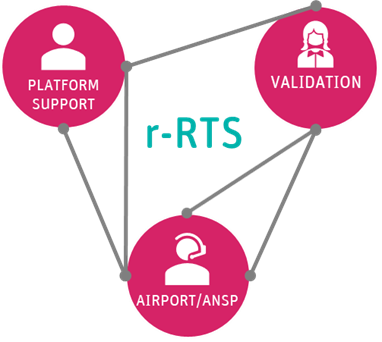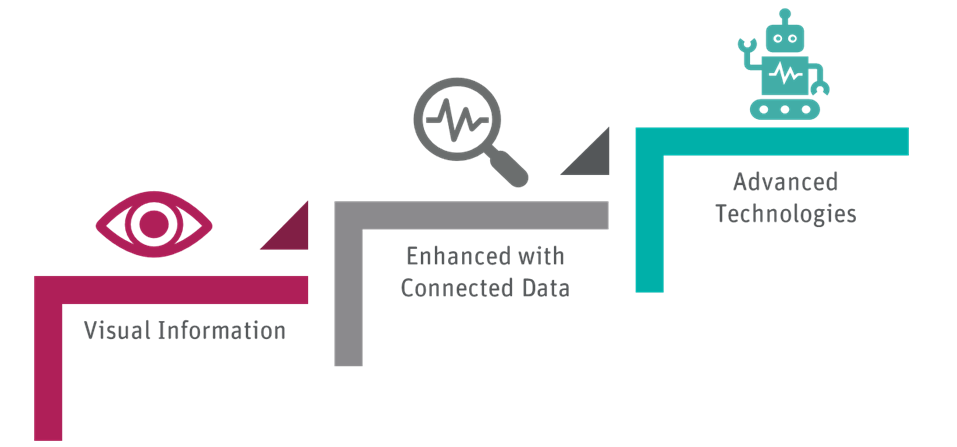Over the last 16 years, Think have been providing ATM concept validation and simulation as one of our core services. We have worked with a range of ANSPs and regulators to lead a wide variety of validation activities; from large scale real time simulations (RTS) to bespoke activities using gaming techniques. We are involved in the production of validation deliverables daily, be it validation strategies, activity plans, log analysis or validation reports. It is safe to say our team of validation experts are very much at home in the simulation room!
But that’s the thing, as I’m sure you are all aware, right now the world is in lockdown and facing the largest global health crisis in modern times. For Think, this means a lot of things; but for our validation experts in particular, it means that until further notice we won’t be in any simulation rooms and are left unable to run simulation activities in the same way, at least for the time being.
This turn is particularly noticeable at this time of year because we usually spend these Winter and Spring months supporting simulation activities, when access to controllers is often greater due to lower traffic in the ops room. Honestly, we are already starting to miss being at the heart of an RTS, talking with controllers, calling “clocks on!”, dynamically adapting exercises to meet day-to-day changes and ultimately helping to develop new ATM concepts. In ATM investment, the spring season typically brings with it the opportunity for ANSPs to set aside some operational resources to focus on developing new concepts and refining procedures through human-in-the-loop simulation.
So whilst the seasons don’t change, what has changed is our ability to travel freely and with that, traffic volumes. This is undoubtedly problematic for ANSPs and impacts their ability to commit funding to longer term investments, but (trying to remain optimistic!) it also provides a rare and opportune moment to focus operational resources on development activities. After all, it cannot be a bad thing that controllers have more time than ever to dedicate to future considerations in the current climate. The constraining factor now is that, while travel restrictions remain, many ANSPs do not have onsite validation experts to help plan and deliver activities; nor might they have access to onsite simulation platform support.
We’ve spent a lot of time thinking about validation over the years. We have helped to develop methodologies, plan complex activities and are always looking for ways to optimise and innovate. So, the day after lockdown, when contemplating the prospect of pausing work, seeing R&D projects mothballed, long term implementation projects halted and our customers left with ample available operational resource, we thought – what if we could bring the sim room to us?
Can it be done?
Actually yes. It is possible to conduct an RTS without having everyone located in the same facility, or even in the same country – a remote RTS (r-RTS). All you really need is a good internet connection, providing the ability for each stakeholder – the ANSPs or Airport, the Platform Technical support (that may be provided from the simulation manufacturer or off-site engineering) and the Validation Team – to be able to communicate with each other and view the simulation to provide a shared situational awareness.
This, in its most basic form, only requires a webcam and an online meeting. However, as ATM solutions have become more advanced, so have the platforms used to assess them. Today, several of the most widely-used simulator platforms now support remote functionality that enables stakeholders to take part and even control simulations from different physical locations.

Ensuring success
Although all of this may be possible, there is a difference between being able to run an r-RTS and it being successful and value-adding. As such, this is where we have focused; to ensure that this is a service Think, as validation experts, can provide without sacrificing quality or conceding the validation methodologies we helped to develop.
The key to success is the ability to provide the same level of situational awareness to observers that they would have if they were physical present in the simulation room. Observers need an understanding of what is going on in the simulation exercise and as such, be able to have follow up conversations with controllers in debriefs, where critical insights into the controllers’ actions and plans can be probed.
To achieve this in a r-RTS activity, there are some specific functions and features that will need to be provided to ensure success. We have considered this in three tiers: evolving from the provision of essential visual information, which provides the human connection and ability to glean subjective insights when working remotely; to enhanced r-RTS, which enables stakeholders to share more information, control aspects of the simulation remotely and be more connected; all the way to advanced configurations using inventive technologies.

Visual Information
As a minimum, the provision of visual and audio information from the simulator platform (ANSP or Airport location) to our validation team enables us to support the conduct of the activity and provide a comprehensive report. This requires the ability to:
- View the simulation exercise, whether that be the radar screen or the ‘out of the window’ view of a tower simulator.
- See and communicate with the exercise participants, the controllers.
- Collect human performance data during and following each exercise run to facilitate validation analysis and reporting.
Much of the data gathered from a traditional RTS is digital anyway, including subjective feedback questionnaires (Think have provided electronic questionnaires via tablet devices for several years). This digitalised information is easily exchanged electronically; independent of location. This enables validation experts to provide data analysis and report on key performance indicators easily without being present or having any view of the simulation exercises. However, what the addition of visual and audio feeds between the ANSP or Airport site and the validation teams provides, is the ability to really understand what has occurred; enabling our teams to apply operational interpretation and probing.
The cameras used to provide these visual feeds to the validation team do not need to be state of the art. A simple webcam inbuilt into most laptops is sufficient to meet basic requirements. However, as with most things, the more you invest; the more comprehensive the validation activity outputs can become. Considering what we would like to see as validation experts, we feel that provision of panning and zooming or mobile cameras, streams showing the controller input devices such an electronic flight strips or ground surveillance displays (if relevant to the simulation) and a means to be able to communicate to controllers in real-time will add value.
All RTS activities rely heavily on human factors assessments and subjective feedback, heightening the importance of having the opportunity to debrief with controllers following simulation exercises during an r-RTS. If high-quality video and audio feeds are provided, then an online meeting can easily substitute a face-to-face conversation. This enables the same level of insight to be gleaned, as controllers’ expressions can be useful for interpretation and a relationship can be built with participants. This is paramount in ensuring that the results of an activity reflect the true experiences of the participants, who are ultimately the users of the concept/tool/procedures being assessed.
Enhanced with connected data feeds
Depending on the simulator platform used by the ANSP or Airport, it may be possible to remotely connect and feed data between various locations. This is where enhancement options beyond ‘visual information-only’ may be considered. The following enhancements can be easily achieved using widely-available simulator platforms:
- The provision of clone displays to external sites that enable the validation team to view exactly what the controller is seeing and the actions they are taking.
- The ability to listen to the radiotelephony between the controllers and the pseudo pilots to provide further insight into how the exercise is developing.
- The provision of a hosted simulation which allows a remote site to control the simulation e.g. start, stop and pause commands.
- The ability to share a view of traffic samples so that the validation teams can work together with platform engineers or ANSP/Airport data preparation engineers to develop and refine traffic samples through data testing.
An enhanced simulation activity with all the above data feeds would enable full connectivity between the ANSP/Airport, validation team and platform engineers. The real benefit of a fully-connected simulation is that the Validation team can directly lead all aspects of the activity, reducing reliance on on-site support roles. This removes the need to crowd the simulation room and allows the ANSP/Airport to hand over the validation conduct to the team to the full extent, as would be the case in traditional activities.
Advanced technologies and looking to the future
The current global crisis has seen the world turn to remote working technology in a way that is likely to breed innovation. The use of telepresence solutions, for the first time, would be useful in every household to help families and friends interact whilst remaining in their own homes. Such solutions would undoubtedly make leading a validation activity from halfway across the world (or even from a few miles down the road) a lot easier and a maybe even a bit more fun. It may be that ANSPs and Airports will choose to invest in such technologies sooner rather than later, as part of future contingency plans. Including such technology in a business case for future concept and validation may give weight to such investments and enable the benefits of r-RTS to continue in the years to come.
We are indeed facing unprecedented challenges, the road to recovery will be long but recovery will come. We don’t want to emerge from a period of lockdown and a potentially lengthy economic recession with all concept development paused circa February 2020. ANSPs and Airports should view this as an opportunity to continue to invest in the future, to focus unused operational resource on concept development, use current and experienced controllers who would normally be such a scare resource to refine procedures, help to optimise the operations and ultimately to prepare for the recovery. All of this can be enabled through a thoroughly thought through RTS activity, that will just so happen to also be conducted remotely.
We’re already working with a number of clients to explore how using the r-RTS solution can enable their projects to continue as planned; rather than being derailed by travel restrictions.


Authors: Jonathan Twigger & Rory Hedman, ATM Consultants


Recent Comments